Make Beautiful Silk Wraps on Your Fly Rod Build
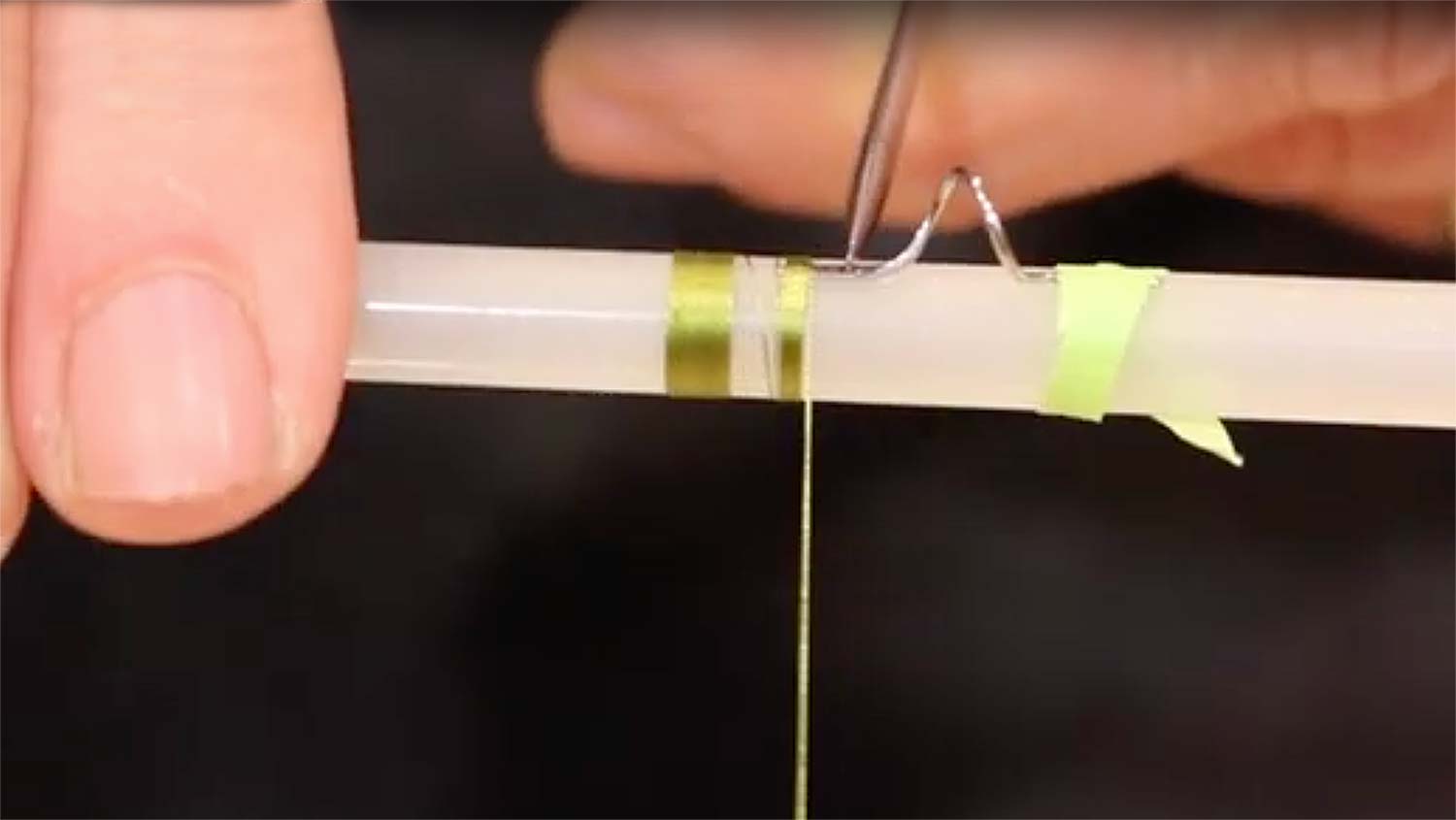
There’s nothing quite like a nicely done silk wrap.
If you want to take your DIY florid build to the next level, silk wraps are a good place to start. It’s not hard to make good silk wraps, but there are some tricks you need to know. It’s different from working with nylon for sure.
In this, the first of a 3 part video series, Matt Draft, of Proof Fly Fishing, will get you started with the basics of making clean wraps in silk and some tricks for working with silk on guides.
ROD BUILDING INTRODUCTION TO WORKING WITH SILK THREAD
Read More »Smith Optics Giveaway: Winner!
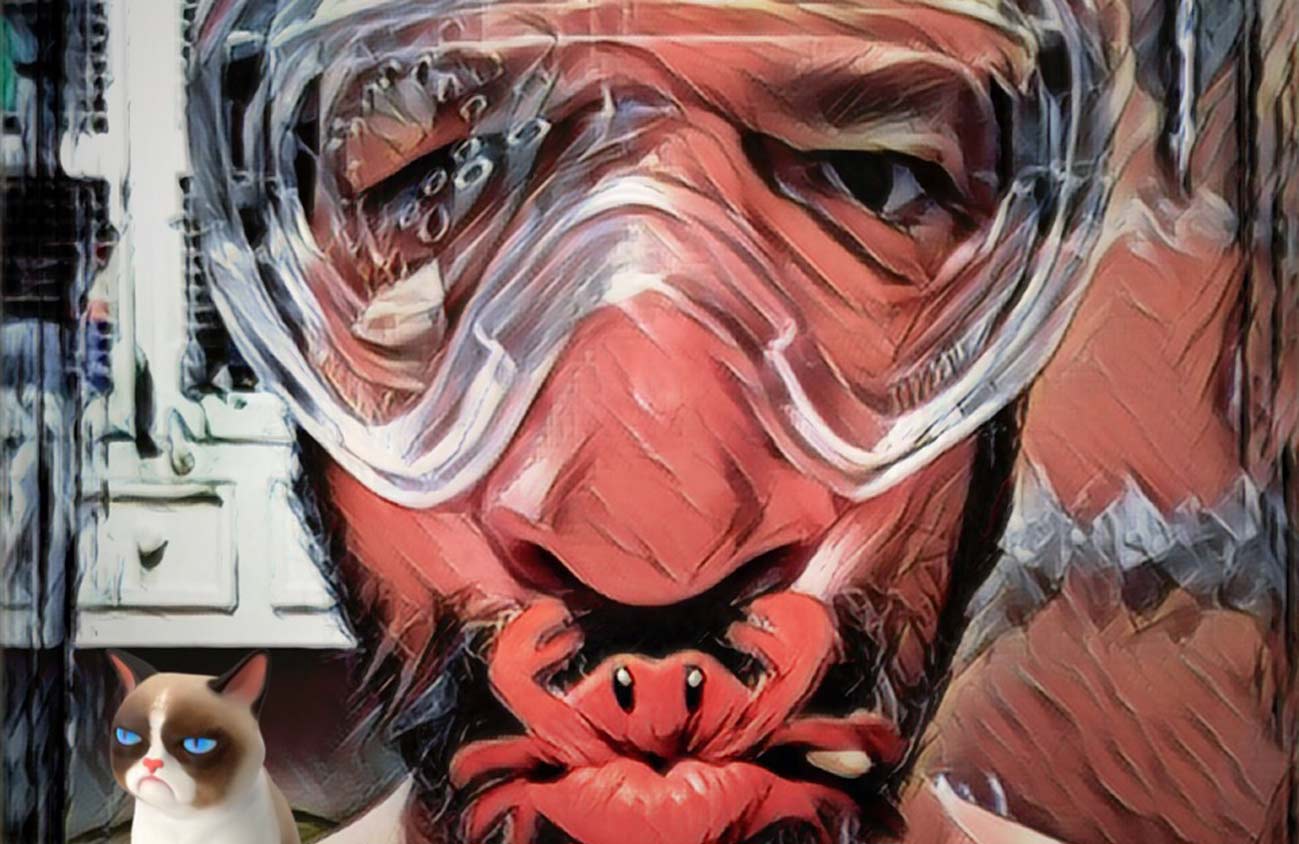
Someone is getting a new pair of fishing glasses from Smith Optics!
And that someone is Justin Garant.
I absolutely love Justin’s trippy reimagining of me and Grumpy Cat. I may actually hang this in my bathroom, its so awesome. We had some great submissions and, on the whole, you were all very generous with me. I guess that shows what a great crowd the G&G readership is. You make me proud.
On a personal note, the eyes are doing well. I’m two weeks past the second surgery now and feeling good. It’s still very early but it looks like I’m going to have pretty good vision. There will likely be some follow up work to do, but not for a while. I feel pretty confident that I can work over some bonefish with what I have, and I’ll be finding out in just over a week when I host a group at Abaco Lodge. Wish me luck.
I’d like to thank all of you who entered the competition as well as a big thank you to Smith Optics for sponsoring. I’d personally like to thank all of you who saw fit not to comment or email about my many typos during the last month. Seeing my screen has been a challenge, and may be for a while yet. Thanks for your patience.
Read More »Fishing the Fall, What You Should Know About Sinking Fly Lines
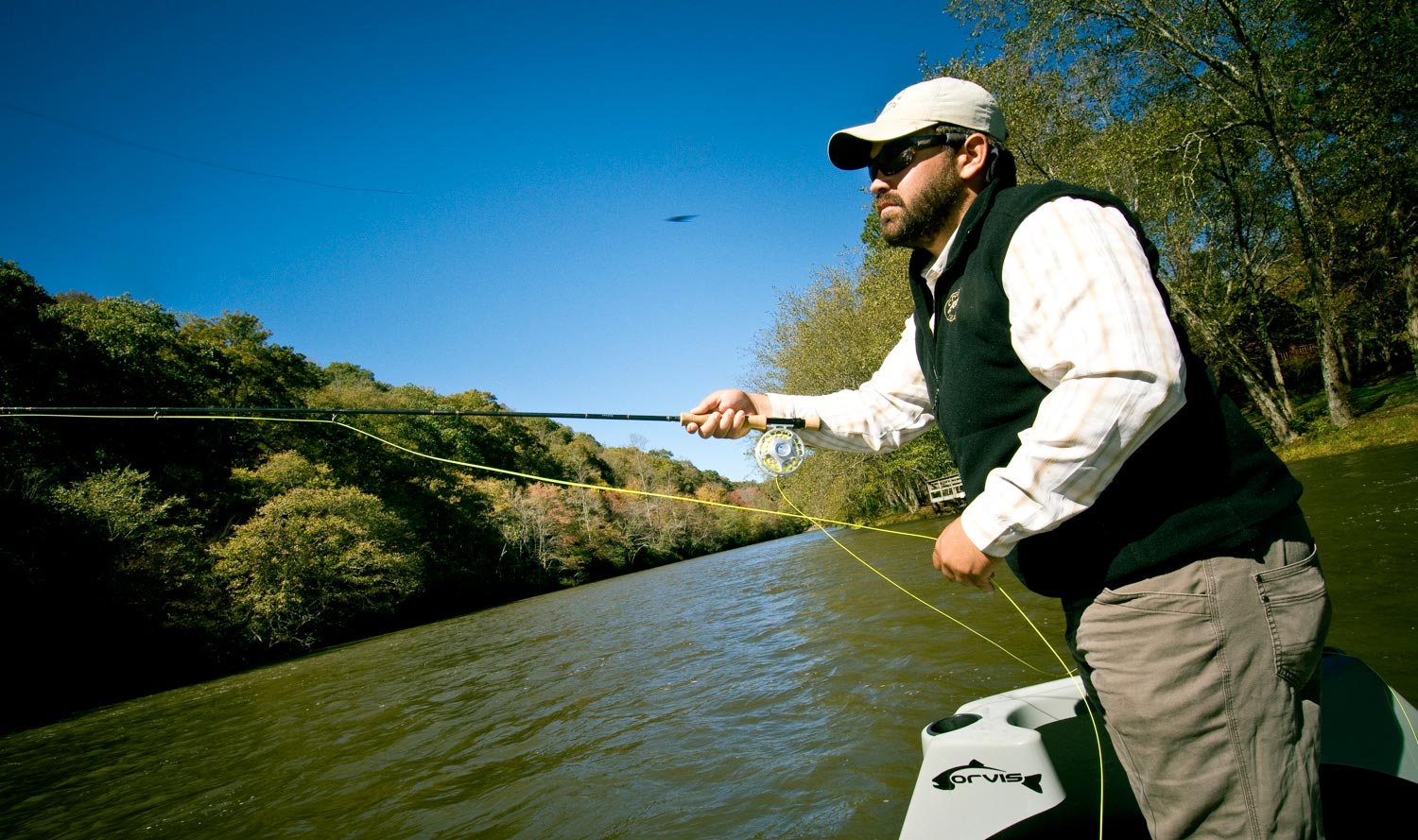
By Garner Reid
A GOOD PORTION OF MY FLY FISHING INVOLVES THROWING SOME SORT OF A SINKING FLY LINE.
Realistically, half of my time on the water involves streamers and sinking lines at least for some part of the day. If I am not out on the water guiding for streamer-eating fish like stripers, I’m in the fly shop talking about them.
I have come to the realization that there is some mystery for most anglers when it comes to choosing which sinking fly line will suit their needs. The selection of sinking lines on the market today is as vast as the waters where we chase our quarry. Today fly anglers can effectively target fish at any level in the water column, given the right combination of rod, fly line, and fly pattern.
When chasing large predatory fish like bass, stripers and big brown trout in moving water you have to get down deeper than floating lines allow. With all of the options and versatility, it is easy to get confused. I have put together some thoughts to help you choose the right line configuration to effectively get into fish.
Fly Weight vs Sink Rate of line
After several seasons experimenting with different types of sinking lines and various streamers, I have found a number of variables which I can control to have a productive day on the water. A big factor in my success has been dialing in the correct weight for the fly with the sink rate of the line.
For most fishing conditions, my primary concern is
Read More »Review of PostFly Box

By Justin Pickett
Box subscriptions. Little packages of awesomeness delivered to your door monthly.
Everything from cosmetics, survival gear, dog treats, coffee, and exotic foods can be shipped to you every month with the swift click of a mouse. And, thankfully, there is a box for fly anglers as well.
Post Fly began its journey a few years ago as the first (that I know of) subscription box for those looking for some monthly fly fishing swag. Concentrating mainly on flies, Post Fly would deliver a sweet little box of goodies every month for nineteen bucks. You could count on getting at least a dozen trout flies, as well as a few other goodies like a leader, tippet, a coupon, and a sticker or two. When they first debuted their subscription program I was hooked. Take My Money! My wife had already bought into a couple of these subscriptions and, quite frankly, I was a little jealous every month when her box full of goodies would arrive. But, now I had one of my own!
I remember getting my first little black box of goodness in the mail. After running back inside, I dissected the box and spilled its contents on to my kitchen table. There were the aforementioned extras and a small, plastic container containing this month’s flies. Popping the top, I peered into the cup to see a mangled mess of flies… hmmmm. I poured them out onto the table and sorted the flies by pattern. There were definitely some interesting… ummm… patterns amongst this lot of flies. One in particular that was surely meant to emulate a popular pattern, but in a way that was hard to describe. The flies were the kind that you would likely find in a clearance bin or on a sales rack at Big Lots. I’m not trying to kick ‘em in the balls about it. I recognized that this was a young company with a great idea. I still saw the value and enjoyed getting that box every month.
Fast forward a couple years and those boxes are still flooding mailboxes on a monthly basis, however things are different for Post Fly. They have been working smart and hard. They have obviously developed some great relationships within the fly industry, and their members are getting some serious bang for their buck. Post Fly has grown from a trout fly subscription into
Read More »Sunday Classic / Check Your Rig For Tangles and Unwanted Debris
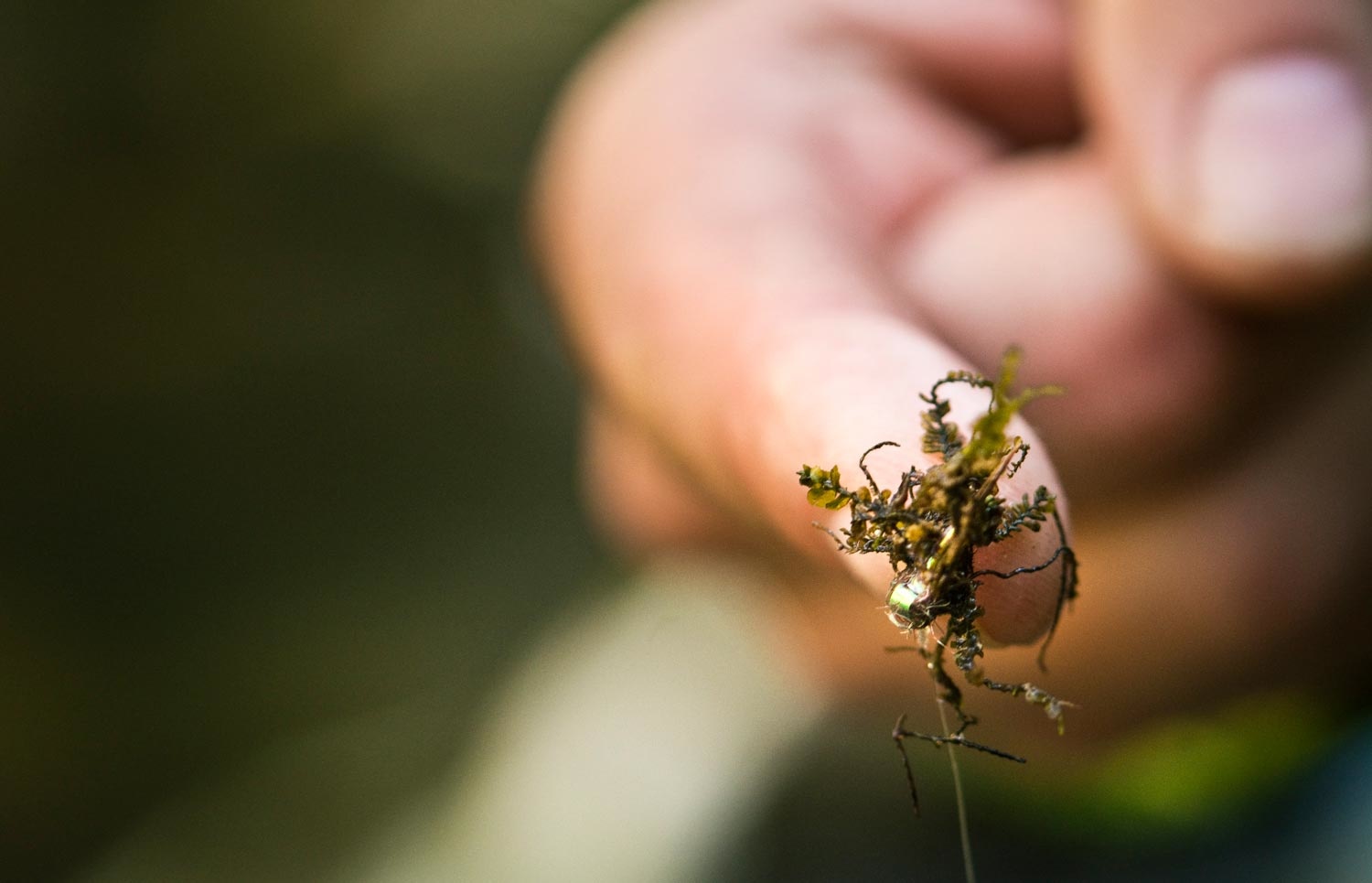
The other day, guiding two anglers, I learned a valuable lesson of how important it can be to regularly check fly rigs throughout the day. One of my clients had just landed a nice trout, so I told him to wade up and fish the next spot upstream, while I spent a few minutes instructing his buddy. About 15 minutes later, I returned to the client I had left, and asked if he’d gotten any action while I was gone. He responded, “No, but I made some really good presentations and drifts.” Surprised that the spot didn’t produce any trout (as it usually does), I requested him to bring in his rig for me to inspect his flies, and I immediately noticed the problem. There was a big glob of debris attached to his fly. It was evident that the nymph rig had snagged the bottom early on, grabbed some debris, and the trout had ignored the salad covered fly the remainder of his drifts.
It’s really easy for us to get lackadaisical on the water fly fishing, especially when we’re enjoying our time away from work and the beauty of the outdoors. Failing to take the time throughout the day to inspect and perform rig maintenance on the water, can have you in the penalty box without even knowing it. The two most common causes are rigs tangled (dry/dropper rig or tandem nymph rig) and flies that are carrying unwanted vegetation. Next time you’re on the water and you’re not getting bites when you think you should be, stop and check your rig for problems. It could very well, be the only reason why you’re not getting your rod bent. For all you guides, make a point to inform your novice clients of the importance of doing these maintenance checks before you leave their side. It’s a valuable lesson many beginners will overlook if you don’t point it out to them.
Read More »Saturday Shoutout / SCOF and the Island of the Damned

Things are getting scary at Southern Culture on the Fly.
This issue of SCOF gets a littler weird, even for SCOF. It’s not for the faint of heart, and it’s not to be missed. You might say it’s, DAMNED good!
CHECK OUT SCOF AND THE ISLAND OF THE DAMNED.
Read More »Q&A With David Danforth of REEL LOCAL
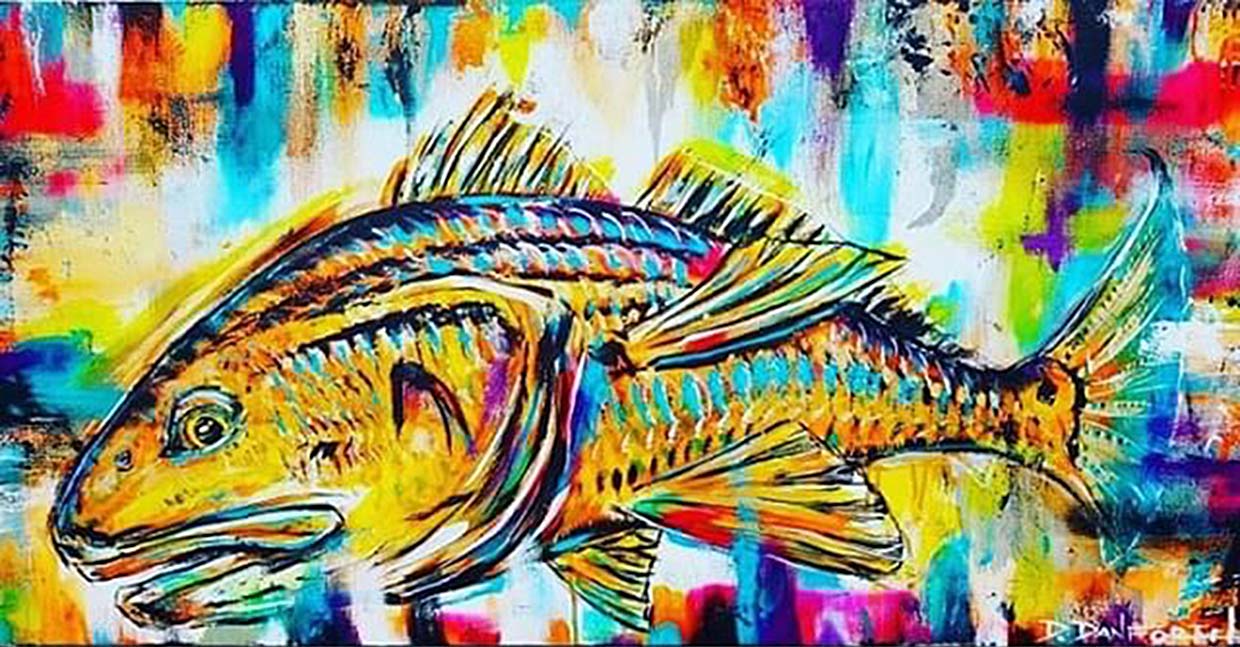
DAVID DANFORTH IS A TALENTED ARTIST RESIDING IN TAMPA, FLORIDA AND IS KNOWN FOR BOLDLY COLORFUL RENDERINGS OF FISH SPECIES FEATURED ON HIS WEBSITE REEL LOCAL (WWW.RELOGEAR.COM).
Owning a piece of his art myself, it is one of the most complimented pieces hanging on my walls. I was able exchange some words with David recently in order to learn a little more about his art and where he came from. As with many artists, the road to David’s success hasn’t been easy, but eventually zig-zagged to where he is today.
Give us a little background about yourself. Where are you from? When did you first become interested in art and how was Reel Local conceived?
I’m a Tampa Native. Third generation Florida angler. Rare, I know to talk to a Florida non-transplant, but there are some of us around! As soon as I was able to hold something to draw with, I have always enjoyed art. It is just part of my personality to design and create. Reel Local actually started as a joke on a napkin between me and my wife. I got back into fishing after taking a break and wanted a sun protective shirt to keep me from charring on the water. After shopping around, I was a little unimpressed with what the market had to offer, especially at their prices. I said to my wife, “I want something Real, and Local. Not a Big Name that charges you $65.” So it began, a UV Protective Shirt, for anglers, by anglers. From apparel company to also branching out as an umbrella company called Danforth Art where we also license the art to other brands for use in their product lines.
How did you develop your artistic skills?
It was just trial and error. I never had an art school degree or any formal training. I usually just imagine an image and then make it come to life. From a youngster I would tattoo with markers on kids in elementary school for their lunch money. It was probably then that I realized you can make money off of drawing. I wish I would have pounced on it faster instead of working in the corporate world for ten years, although the nine-to-five sales world did teach me a lot about customer interaction, marketing, sales, how to run a business, and what not to do to be successful. I did do a stint of Cad design in high school for Yacht Designing and Architecture. I realized that art school was not reachable for me at the time, so I painted motorcycles in Texas for a few years. There may have also been some street art mixed in there that helped me grow a passion for the bright colors I use in my art now.
It’s apparent that you draw a lot of your inspiration from saltwater fishing… How long have you been fishing? Are you a “fly-or-die” angler?
I have been fishing since I was a little kid just like a lot of other fishing nuts. I spent my childhood spending many nights on isolated islands, sleeping in hammocks, cooking our catch all the while watching my dad and his buds eat oysters, play guitar by a fire and tell fish stories. When I first started fly fishing
Read More »Is Carrying A Gun On The Water Ever The Right Thing To Do?
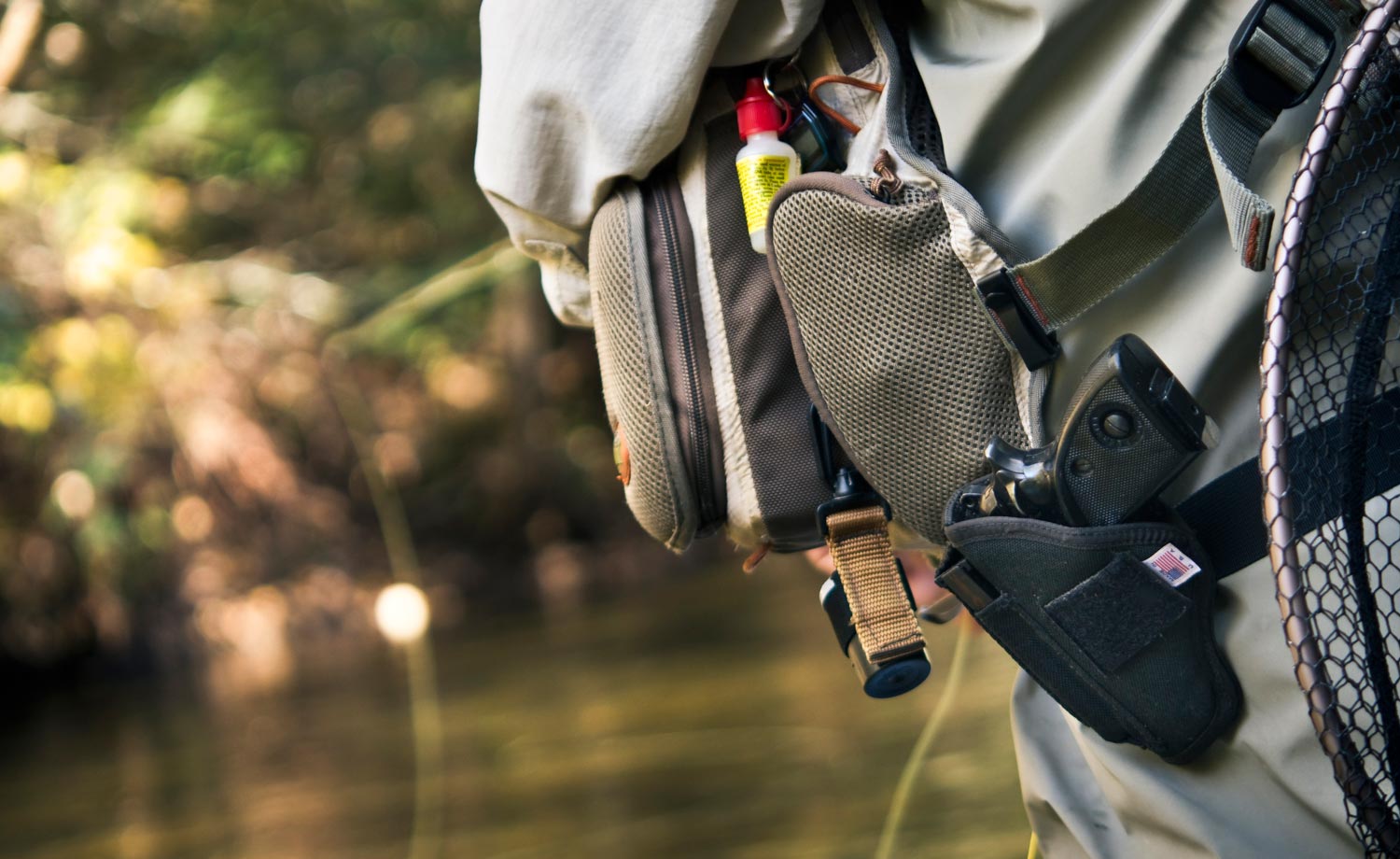
I HONESTLY HAD NO IDEA WHAT A HOT BUTTON ISSUE THIS WAS.
Until I posted a link on Facebook the other day to the new Fishpond sling pack and commented that it was designed to carry a pistol. Man, did that post ever light up. The discussion got pretty heated with anglers on both sides of the issue having very strong opinions. It made me think a little harder about my own views and I thought it was worth opening the topic here.
I’m not looking to start a gun control debate. Let’s save that conversation for another forum. I just want to address the idea of carrying a gun while fishing. In the interest of disclosure, I will say that I own a fair number of guns. Handguns, shotguns and rifles. I strongly believe in the right to own them and I believe that the vast majority of gun owners are quite responsible. I also do not carry a weapon, other than to and from shooting it.
The reason I don’t carry a gun is simple. I don’t want to shoot anyone. I don’t want it on my conscience and I don’t want to deal with the ramifications. I generally don’t believe in the unnecessary taking of life. By leaving my guns at home I greatly reduce the chances of having to make hard decisions under pressure. Come in my house uninvited while my wife and I are in bed and we’ll have a very different discussion.
I should also say that these are my personal decisions and I do not judge others who make different choices. I just ask, very politely, that they not shoot me or my loved ones and I try not to give them reason.
These choices are in no way academic or untested. I’ll not go into the stories here but I have found myself looking down the barrel of a gun on almost a half dozen occasions, knowing that the person on the other end had no problem, or every intention of pulling the trigger. So far I have a pretty good track record with crisis management.
I have, on two occasions however, carried a gun when fishing.
Once was for protection from animals. I am an animal attack magnet. I’ve been attacked by just about everything with fur and one day while fishing a favorite stream I was attacked by an
Read More »Umpqua Mini Lt Fly Boxes
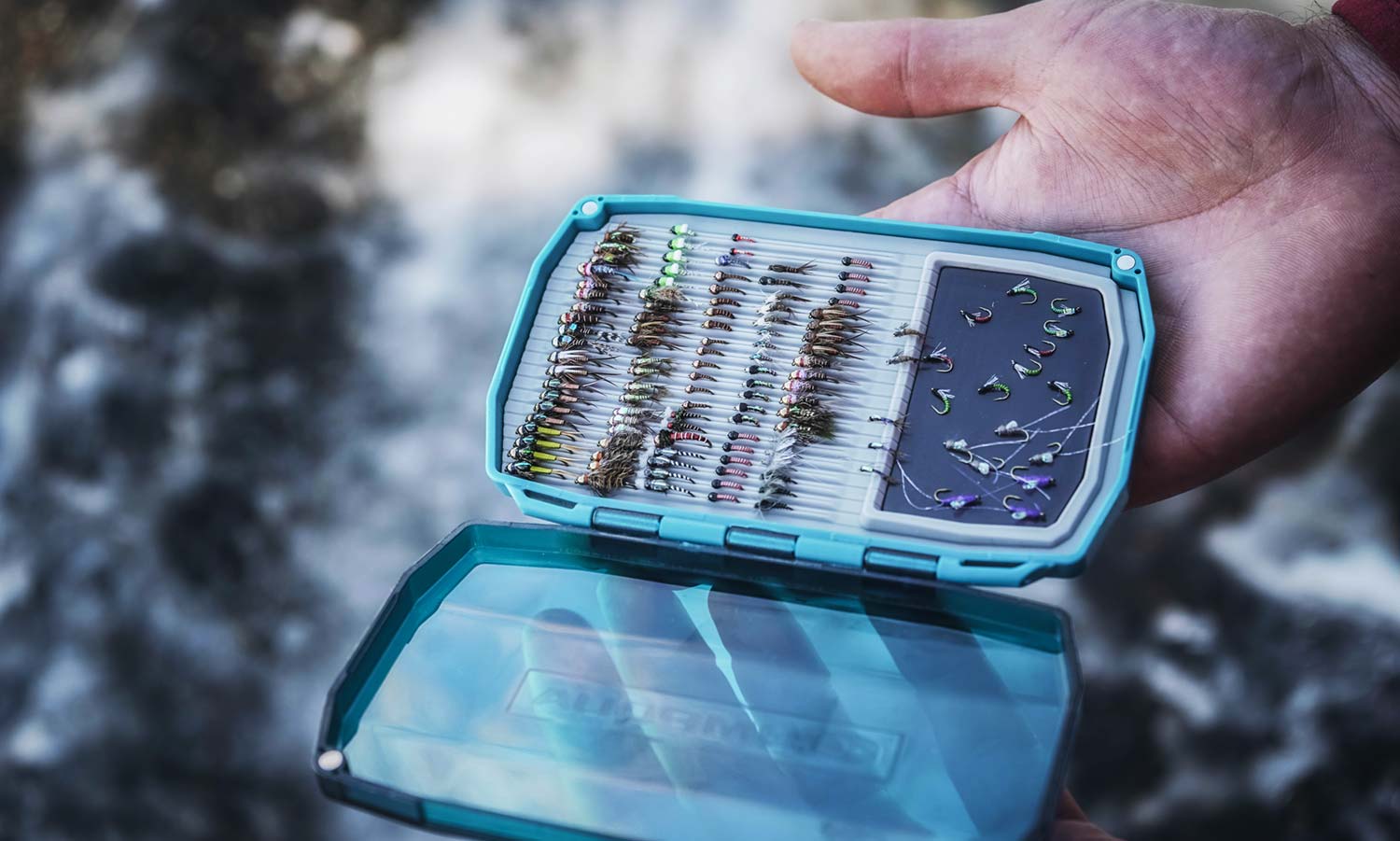
By Bob Reece
While some people love large fly boxes, others prefer a reduced footprint.
In acknowledgement of this, Umpqua has created their line of Mini UPG LT fly boxes. These downsized homes for your flies are the perfect complement to their larger counterparts.
For the time that I spend on the water each year, durability is a top priority for me when selecting fly boxes. More often than not, I forget to roll or zip my pack shut. As a result of this my fly boxes often take unintended trips to the sand, gravel and rocks below. In the past, I’ve had several boxes fail to withstand this test by partially or completely shattering on impact. Even with their petite size, my Mini LT boxes have survived my intended and unintended impact tests without damage.
Equally important to its external durability, is a fly boxes grip of the goods. With the fly boxes that I’ve had in the past, a firm drop or a day spent bouncing around in my pack resulted in dislodged flies. As a guide my flies are an essential element of my client’s success. I need a box that holds them safely in pace, whether they’re in my pack or reaching the bottom of a trip to the ground below. The new Umpqua Mini boxes have proven themselves in both of these aspects.
Lastly and maybe most importantly are the benefits of
Read More »3 Reasons Not To False Cast
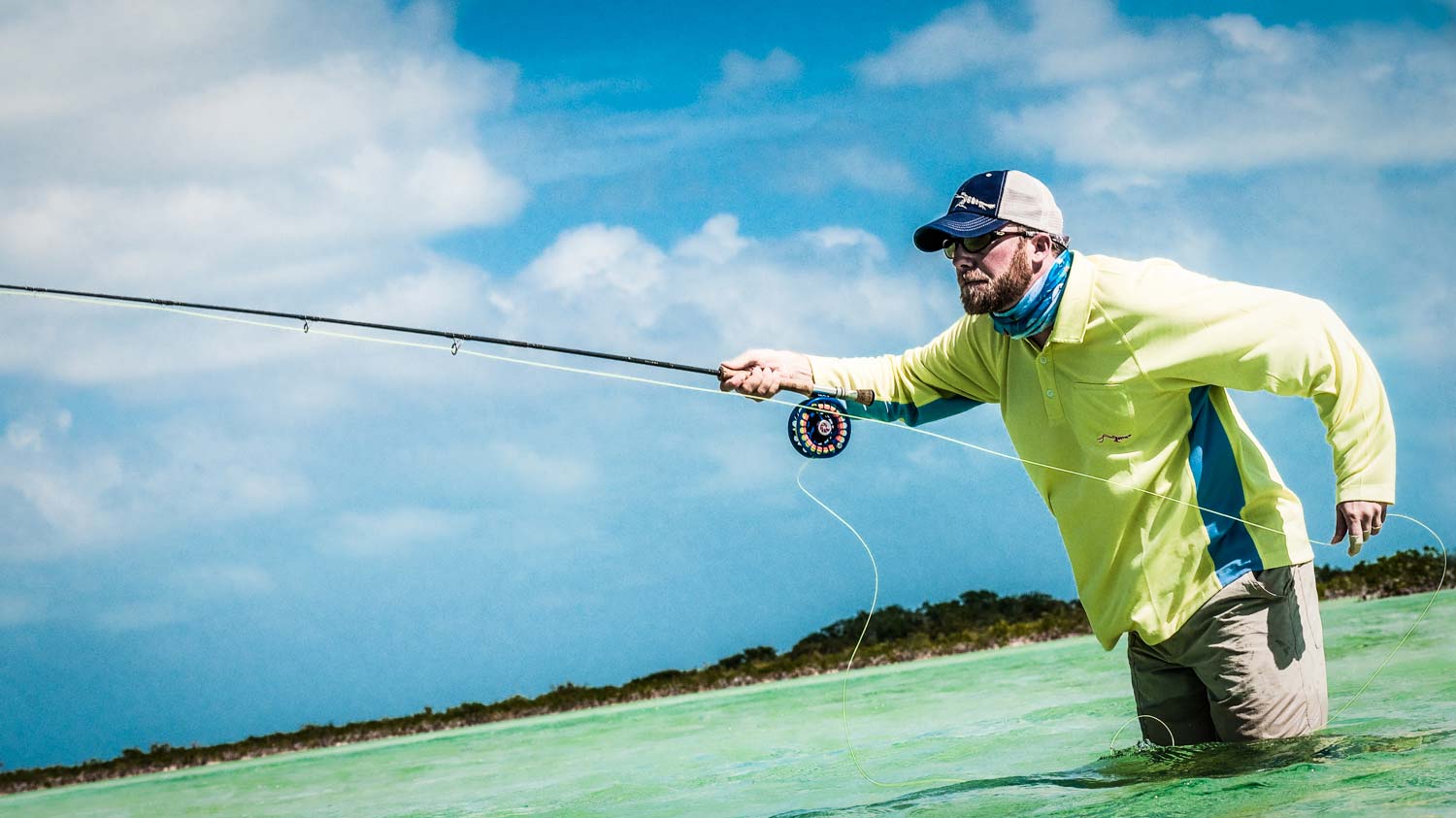
Most fly anglers do too much false casting.
False casting is almost a nervous habit for many fly fishers. It’s also a bad habit. Excessive false casting is not only unnecessary, it will cost you fish. Although I’m thinking specifically about saltwater fly fishing, the same ideas hold true in freshwater. It’s a bad idea to false cast any more than absolutely necessary.
In saltwater fly fishing, false casting serves one purpose, to work out enough line to reach a fish. To be successful, you should practice doing this in as few false casts as possible. The golden rule is, never more than three. By shooting line in both the forward and back cast, it’s completely possible you work out eighty or ninety feet of line in three false casts. Any more is asking for trouble.
HERE’S WHY.
False casting wastes time.
There is a slim window of opportunity for making your best presentation to any fish. Timing is key. Waste too much time false casting and you’ll miss your shot.
Read More »